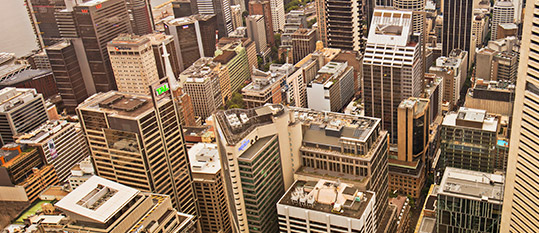Which AREIT sub-sector to be in with rising rates

AREITs have been a key beneficiary of cap rate compressions and falling interest rates in the past 10 years. With the RBA raising rates for the first time since 2010, and a volatile and rising long bond yield of 3.3%, market sentiment towards the sector has been negatively impacted.
With this in mind, we have assessed the outlook for asset values for each of the sub-sectors. Compared to long-run averages, cap rate spreads to real yields are elevated for retail, on par for office and below average for industrial. Thus, on the surface, industrial assets have the most downside risk – however, this does not take into account rental growth and structural tailwinds from the growth in e-commerce.
The sector we actually see with the biggest downside risk in is the office sector. The slow rebound to physical occupancy (40% of pre-COVID levels), vacancy rates of over 12% in major cities and 30% tenant incentives are placing further pressure on rents. In addition, with the flight to quality we see an increase in capex for older assets dragging on operating income in the near term. As a result, we have factored in a 50-basis point cap rate expansion for office assets from an average of 5.0% to 5.5%.
For discretionary retail, we have factored in a lower level of cap rate expansion of 30-basis point to an average of 5.6%. This is based on better-than-expected trading performance (sales up 10% on pre-COVID levels), the ongoing roll off of retail abatements and return of ancillary income to centres. However, some challenges remain as market rents are still down 8% for regional centres since the start of COVID. With the increase in cost of living and diminishing consumer sentiment due to rising inflation, we continue to prefer well-run non-discretionary retail centres.
Industrial cap rates are currently at 4.4% and are now only a +360bps spread to the 10-year real bond rate vs. historical averages of between 400bps to 600bps. However, the sector has ongoing tailwinds with a positive outlook for rental growth based on continued demand and limited supply. This has driven rental growth to record levels, which are now up ~10% year-on-year in several eastern seaboard infill markets. Whilst growth will moderate, we expect high single digit growth to remain over the next 2-3 years, offsetting any pressure from higher rates.
Based on the latest quarterly company updates, the only sectors that reported an increase in valuations (or cap rate compressions) are childcare, healthcare and non-discretionary retail. This is due to their certainty of earnings, which continues to attract capital flows. For example, reported June 2022 preliminary valuation increases on December 2021, were +7.8% for Arena REIT, +4.1% for HomeCo Wellness REIT and +7.8% for HomeCo Daily Needs REIT.
Although rising bond yields may be a headwind to asset values, we believe alternative assets such as childcare, healthcare, seniors living and defensive retailing will continue to be relatively insulated due to their certainty of income based on demand driven by secular trends and long term stable tenancies.

